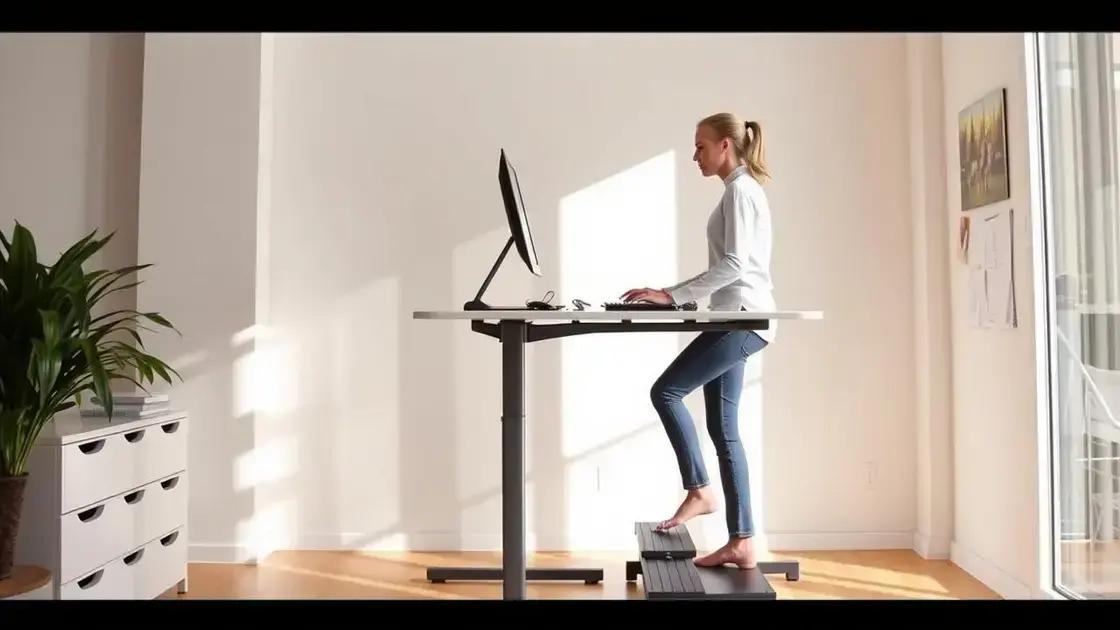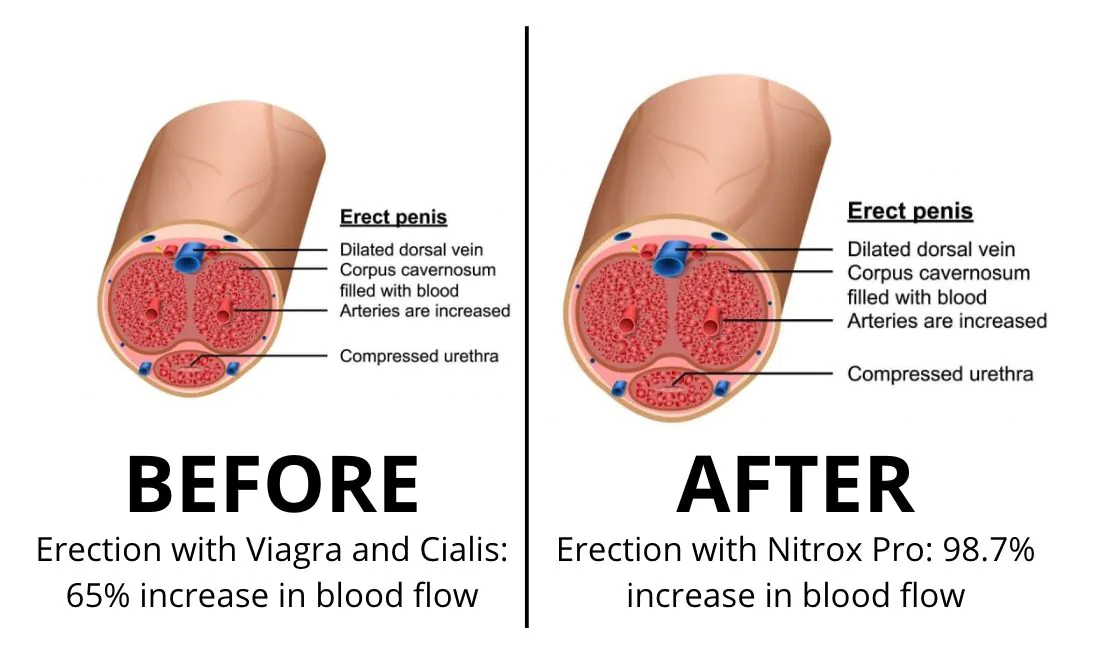The benefits of standing desks for better posture include improved spinal alignment, increased energy levels, and reduced risk of chronic diseases, along with tips for a smooth transition and ergonomic setup.
Standing desks are becoming increasingly popular in modern workplaces, and for good reason. The benefits of standing desks for better posture can dramatically enhance comfort and productivity. Many people suffer from poor posture due to prolonged sitting, leading to discomfort and health issues. In this article, we will discuss how standing desks can improve your posture, their additional health benefits, and practical tips for making the transition to a standing desk easier.
Understanding Standing Desks

Understanding standing desks is essential for anyone looking to improve their workspace. Standing desks are designed to allow individuals to work while standing rather than sitting. They come in various styles, including adjustable desks that can switch between standing and sitting positions. This flexibility helps users find their perfect height for optimal comfort during work.
How Standing Desks Work
Most standing desks feature a mechanism that lets you change the desk’s height easily. This means you can raise or lower the desk according to your preference. Many models also encourage an active workspace, allowing you to incorporate movement throughout your day.
Popularity and Usage
In recent years, standing desks have gained popularity due to the increasing awareness of the negative effects of prolonged sitting. They are commonly used in offices, schools, and homes, where individuals spend long hours working or studying. Many people report that standing while working can lead to increased energy and focus.
Considerations When Using Standing Desks
While standing desks offer many advantages, it is essential to use them correctly. It’s important to alternate between sitting and standing to prevent fatigue and strain. Additionally, users should maintain good posture by keeping their screens at eye level and ensuring their wrists are straight while typing.
Investing in an anti-fatigue mat can also help reduce discomfort when standing for extended periods. Understanding standing desks is vital to making the most of this workspace solution and enhancing overall well-being.
Improving Posture with a Standing Desk

Improving posture with a standing desk is one of its most significant benefits. Many people spend hours sitting, which can lead to poor posture and back pain. Using a standing desk encourages you to maintain a more neutral spine, significantly reducing the likelihood of slumping.
How Standing Helps Posture
When using a standing desk, your body naturally aligns better. Standing encourages you to shift your weight from one foot to the other. This gentle movement can help strengthen your core muscles, which support your spine and promote a healthier posture.
Setting Up Your Desk for Better Posture
To maximize posture improvement, ensure that your standing desk is set to the correct height. Your elbows should be at about a 90-degree angle when typing, while your computer screen should be at eye level. This setup helps prevent neck strain and encourages proper alignment of the head, neck, and spine.
Using Supportive Accessories
In addition to adjusting your desk height, consider using ergonomic accessories. An anti-fatigue mat provides cushioning and support, making it more comfortable to stand for longer periods. A footrest can also help you shift your weight and reduce fatigue, allowing for a more dynamic stance.
Small changes, like taking breaks and stretching, are crucial. Regularly standing can alleviate discomfort while also promoting an upright posture over time. Incorporating these practices with a standing desk sets the stage for a healthier and more supportive work environment.
Health Benefits Beyond Posture

Health benefits beyond posture are essential to understand when considering a standing desk. While improving posture is a significant advantage, standing desks also contribute to overall well-being in various ways.
Increased Energy Levels
Many users report an increase in energy levels throughout the day when using standing desks. Unlike sitting for long periods, standing can help keep your blood circulating, which contributes to a boost in alertness and productivity.
Weight Management
Standing desks can also assist in weight management. Standing burns more calories compared to sitting, which can help prevent weight gain. Incorporate standing into your daily routine can be a simple way to increase your daily energy expenditure.
Reduced Risk of Chronic Diseases
Research indicates that prolonged sitting may be linked to an increased risk of chronic diseases such as heart disease and diabetes. By using a standing desk, you can decrease the time spent sitting, potentially reducing your risk of these health issues.
Enhanced Mood and Mental Health
Using a standing desk can positively influence your mood and mental health. Studies suggest that standing can help reduce feelings of stress and fatigue, which can lead to a more positive work environment. Improved mood can increase productivity and satisfaction in your work life.
Incorporating standing desks into your routine brings many health benefits that go beyond simply improving posture. By embracing a standing workspace, you are taking a step toward a healthier lifestyle.
Tips for Transitioning to a Standing Desk

Transitioning to a standing desk can be an exciting change, but it requires some planning. Here are some helpful tips to make the transition smoother and more enjoyable.
Start Slow
One of the best ways to transition is to start slow. Begin by standing for 15 to 30 minutes at a time. Gradually increase the duration as your body adapts. This approach will help reduce discomfort and allow you to build stamina.
Alternate Between Sitting and Standing
Initially, consider alternating between sitting and standing throughout your day. Use a timer to remind yourself to switch positions every 30 or 60 minutes. This can help ease your body into longer periods of standing.
Focus on Ergonomics
Ensure that your standing desk setup is ergonomic. Adjust the desk height so your computer screen is at eye level and your elbows are at a 90-degree angle. A keyboard tray can help maintain a comfortable wrist position while typing.
Incorporate Movement
Try to incorporate movement into your day. Simple stretches, walking, or even shifting your weight from one foot to the other can help reduce fatigue. Consider using a footrest to encourage slight movements while standing.
Stay Comfortable
Using an anti-fatigue mat can make standing more comfortable. These mats provide cushioning and support, helping to reduce strain on your legs and feet. Wearing supportive shoes is also crucial for comfort.
By following these tips, you can make the transition to a standing desk enjoyable and beneficial for your overall health. Embrace the change and take small steps toward a more active work lifestyle.
Embrace the Benefits of Standing Desks for Better Posture
Transitioning to a standing desk offers a multitude of benefits, significantly enhancing posture and overall health. By understanding the advantages, such as increased energy levels and reduced risk of chronic diseases, individuals can make informed decisions about their work environment.
Implementing practical tips for a smooth transition ensures that the adjustment to standing while working is both comfortable and sustainable. Adopting ergonomic practices can further optimize the experience, promoting well-being and productivity.
In conclusion, standing desks represent not just a trend but a proactive approach to improving workspace habits and physical health. Embrace the change for a healthier lifestyle and a more dynamic work experience.
FAQ – Frequently Asked Questions about Standing Desks
What are the benefits of using a standing desk?
Standing desks improve posture, increase energy levels, and reduce the risk of chronic diseases associated with prolonged sitting.
How do I adjust my standing desk for proper ergonomics?
Adjust your desk height so your elbows are at a 90-degree angle and your screen is at eye level to maintain good posture.
Can I use a standing desk all day?
It’s best to alternate between sitting and standing throughout the day to prevent fatigue and promote comfort.
What accessories can improve my standing desk experience?
Using an anti-fatigue mat, a footrest, and ergonomic tools can enhance comfort and support while working at a standing desk.
How can I transition to a standing desk smoothly?
Start by standing for short intervals, gradually increasing your standing time, and ensuring that you maintain an ergonomic setup.
Are there health risks associated with standing desks?
While standing desks have many benefits, standing for too long without breaks can lead to discomfort, so it’s essential to incorporate movement and rest.













